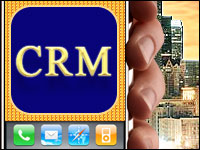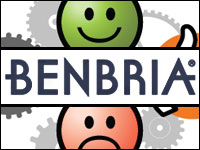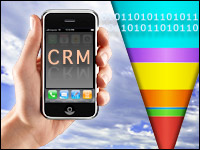
The mobile experience has clearly changed consumers’ expectations of the shopping experience, creating higher expectations for service, selection and convenience. Want a certain item? With in-stock notifications, a mobile shopper doesn’t have to run around to various stores. Want to ask a question about a product? Many apps offer chat.
“This could be in stark contrast to trying to find a store employee during the busy holiday shopping season,” Alex Kirmse, head of mobile for Zappos, told CRM Buyer.
So if mobile has changed just this one piece of the consumer experience, one can only wonder what else it has changed. In short, is it transforming expectations elsewhere — such as, say, with traditional software?
New Expectations for the Desktop
In a word, yes. Mobile CRM is a marked departure from its sometimes clunky, oftentimes confusing desktop software counterpart. This is especially true with sales force automation software, which is notorious for having to coax users into adoption.
The mobile revolution is definitely having an impact on people’s expectations for SFA desktop software, said Archie Roboostoff, Borland solutions portfolio director at Micro Focus.
These changes to desktop software range from graphic design to actual functionality to distribution and upgrades, he told CRM Buyer.
“People are now used to a certain type of interface which includes larger buttons, swipes and gestures,” Roboostoff pointed out.
“Because of mobile, people want apps that get right to the functionality as soon as possible. This is now influencing desktop computing as well,” he observed, pointing to the example of Windows 8’s new interface. “The two worlds are colliding, and it’s making for some interesting UI work.”
Ease of use and push technology are other examples, noted Roboostoff.
“There will always be specialized applications for various fields,” he continued, “but for the most part, the expectations for users these days is to be up and running with mobile apps within five minutes. We’ve started directing our developers to build software that our users can get to in 5+5” — that is, the top five features in less than five minutes.
Push technology has been around for some time, but now that users are familiar with how mobile apps notify them of “events” like a deal at a local restaurant or a friend checking in locally, users of desktop applications are expecting their tools to notify them of events or anomalies like a lost sale or an angry customer, Roboostoff explained.
Distribution and Other Business Issues
Mobile is also having an influence on software business trends such as distribution and updates, Roboostoff maintained. “The days of long sales cycles, lengthy evaluations and trials are numbered. Users want applications that they can get their hands on with a minimal investment up front and expand the usage as success is proven.”
For example, mobile app stores established by Apple, Google, Microsoft and Intel have made their way into traditional desktop computing, he pointed out.
A 2-Way Street
Expectations about performance can cut both ways.
“One thing we’re noticing is that people have almost irrational expectations about app speed,” said Anthony Citrano, VP of communications and marketing for EdgeCast Networks. “This is because end users are now long-accustomed to broadband home and office speeds.”
Even the best LTE networks can’t deliver these speeds, Citrano told CRM Buyer, so SaaS companies are investing a lot of resources into optimizing specifically for mobile.
“This goes well beyond UI and deeper into the application and the network: reducing application weight, optimizing servers, and staging application assets as close to users as possible,” he said.
Who Has the Bigger Burden?
Still, the bigger burden of unfulfilled expectations seems to be on the software side.
“Plain and simple, users now expect software that loads up instantly, looks beautiful, remembers who they are when they switch between programs, upgrades itself in seconds and so on,” Alexei Miller, executive vice president at DataArt, told CRM Buyer. “Then they go to the office to find clunky, slow and often ugly business systems.”
It’s not only the software that needs to change, but also the IT department, according to Miller.
“In the past, users would request a change and IT would say ‘thanks, we will put it in the queue to be included in next year’s release if budgets allow — and after we weigh all considerations for our thousands of users,’ he said. “To which the user can now respond, ‘how come Facebook can upgrade their app every couple weeks and roll it out to a billion users?'”

























































Great insights about mobile experiences! Customers have new expectations with the increase of technology use and social media use. Sometimes it is unrealistic, but businesses need to be sure to address this to some degree. For example, responding to customers on social media sites within x-amount of minutes will let customers know you are listening and you care. Or updating mobile apps with faster loading speed or easier use when customers are complaining about it.